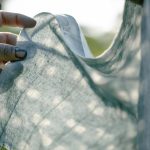Are you ready to dive into the world of stitching elastic like a seasoned pro?
Just like a skilled craftsman seamlessly weaves threads together, mastering the art of stitching elastic can elevate your sewing game to new heights.
Whether you're looking to create perfectly-fitted garments or add a touch of stretch to your projects, understanding the ins and outs of working with elastic fabrics is essential.
In this guide, you'll uncover the essential tips for stitching elastic that will equip you with the knowledge and techniques needed to achieve flawless results.
From selecting the right type of elastic to troubleshooting common issues, you'll soon be on your way to creating professional-looking garments with ease.
Key Takeaways
- Understanding the different types of elastic fabrics and their stretch capacities is crucial in choosing the right elastic for a project.
- Adjusting thread tension and choosing the correct needle for the fabric and elastic being used is important in preparing the sewing machine for stitching elastic.
- Testing stitch length and techniques on scrap fabric is necessary to achieve balanced stitches and prevent puckering or excessive stretching.
- Troubleshooting common issues, such as elastic puckering or thread bunching, can be resolved by adjusting thread tension, using the correct needle and stitch type, and pre-stretching the elastic.
Understanding Elastic Fabrics
When stitching elastic, it's important to understand the properties and behavior of this versatile fabric. Elastic fabrics are known for their unique stretch properties, which allow them to expand and retract with ease. There are different types of elastic fabrics, each with specific stretch characteristics that should be considered when choosing the right one for your project.
Understanding the stretch of elastic fabrics is crucial for successful sewing techniques and garment construction.
Different types of elastic fabrics, such as braided, knitted, or woven elastics, have varying stretch capacities. It's essential to comprehend these differences to select the most suitable elastic for your specific sewing project. For instance, when working on a garment that requires a high degree of stretch, knitted elastic would be the optimal choice due to its ability to stretch significantly without losing shape.
Mastering the understanding of elastic fabrics and their stretch properties will enhance your ability to select the right material for your sewing projects and ensure that your garments have the perfect fit and comfort.
Choosing the Right Elastic
Selecting the proper elastic for your sewing project hinges on understanding the distinct characteristics of each type and how they align with your garment's stretch requirements. Different elastic types offer varying levels of stretch, recovery, and durability. Here's a breakdown of common elastic types and their best uses:
| Elastic Type | Characteristics |
|---|---|
| Braided Elastic | Lightweight, suitable for light to medium stretch fabrics |
| Knit Elastic | Soft, comfortable, ideal for waistbands and leg bands |
| Woven Elastic | Firm, sturdy, great for heavy-duty applications like waistbands and suspenders |
| Clear Elastic | Transparent, perfect for fabrics where the elastic should not be visible |
| Fold-Over Elastic | Ideal for binding edges, often used in lingerie and sportswear |
Understanding the characteristics of each type will help you make an informed choice based on your specific project needs. Additionally, proper elastic care, such as avoiding high heat and sharp objects, will ensure the longevity of your garments. By selecting the right elastic and caring for it appropriately, you can elevate the quality and comfort of your sewing projects.
Preparing Your Sewing Machine
Before you start stitching elastic, it's important to prepare your sewing machine for the task ahead.
You'll want to adjust the thread tension to accommodate the stretchiness of the elastic and prevent any puckering.
Choosing the right needle for the fabric and elastic you're working with is also crucial, so take a moment to make sure you have the appropriate needle installed.
Adjusting Thread Tension
To ensure proper stitching of elastic, adjust the thread tension on your sewing machine to prevent puckering or stretching of the fabric. Here's how to masterfully adjust the tension:
- Understand Your Machine: Get to know your sewing machine's tension settings and how they work. Familiarize yourself with the manual to make the necessary adjustments confidently.
- Test and Adjust: Practice on scrap fabric with the same type of elastic you'll be using in your project. Tweak the tension settings and observe how the stitches look and feel.
- Find the Sweet Spot: The ideal tension will create balanced, even stitches without causing the fabric to pucker or stretch. Aim for a result that looks neat and feels secure.
Choosing the Right Needle
When stitching elastic, ensure you use the appropriate needle for your sewing machine to prevent skipped stitches and fabric damage. Needle sizes and types are crucial for elastic fabrics.
For elastic materials, it's best to use a ballpoint needle, which has a rounded tip that can slip through the fibers without causing damage. The size of the needle also matters; for lightweight elastic fabrics, a smaller needle size like 9/65 or 11/75 is suitable, while heavier elastic fabrics may require a larger size such as 14/90.
Using the correct needle will ensure that the stitches are even and that the elastic retains its stretch and recovery properties. By preparing your sewing machine with the right needle, you can achieve professional-looking results and avoid potential fabric mishaps.
Testing Stitch Length
Ensure you select the appropriate stitch length before testing on a scrap of the elastic fabric, as this will help you determine the ideal setting for your specific material and avoid potential stitching issues.
When preparing your sewing machine for stitching elastic, consider these crucial tips:
- Adjusting Stitch Tension: Experiment with different tension settings on a scrap of the elastic fabric to ensure that the stitches lay flat without causing the fabric to pucker or stretch excessively.
- Elastic Stretchability: Test the stitch length on a small piece of the elastic fabric to observe how the stitches accommodate the fabric's stretch. This will help you determine the optimal stitch length that allows the elastic to maintain its stretch while securing the seams effectively.
- Machine Compatibility: Ensure that your sewing machine is compatible with stitching elastic by testing different stitch lengths and adjusting the machine's settings as needed for the best results.
Techniques for Stitching Elastic
Mastering the art of stitching elastic can elevate your sewing projects to a whole new level of comfort and functionality. When it comes to elastic sewing techniques, troubleshooting is a common challenge.
One essential technique is to use a stretch or ballpoint needle to prevent skipped stitches and fabric damage. Additionally, adjusting the tension on your sewing machine can ensure that the elastic is securely attached without causing the fabric to pucker. It's also crucial to use the correct stitch type, such as a zigzag stitch, to allow the elastic to stretch without breaking the thread.
When dealing with elastic fabric properties, sewing tips can make a significant difference. Pre-stretching the elastic before sewing it onto the fabric can help prevent it from becoming too tight after stitching. Furthermore, using a fabric marking tool to divide the fabric and elastic into equal sections can ensure an even distribution of the elastic, resulting in a professional-looking finish.
Troubleshooting Common Issues
Are you struggling with elastic puckering or thread bunching when stitching elastic? Don't worry, we've got you covered with some essential troubleshooting tips.
From preventing elastic from puckering to avoiding the dreaded bunching of elastic thread, we'll provide you with practical solutions to these common issues.
Elastic Puckering Solutions
Have you tried adjusting the tension on your sewing machine to resolve elastic puckering issues? Sometimes, improper elastic thread tension can lead to fabric puckering, but don't worry, there are solutions to these common issues.
Here are some essential tips to help you troubleshoot and resolve elastic puckering:
- Check Your Thread Tension: Ensure that the elastic thread tension is adjusted correctly to prevent fabric puckering.
- Use the Right Stitch Length: Opt for a slightly longer stitch length when sewing elastic to prevent excessive tension and puckering.
- Stretch the Elastic as You Sew: Gently pull the elastic and fabric while stitching to maintain even tension and minimize puckering.
Preventing Elastic Thread Bunching
To prevent elastic thread bunching, there are several steps you can take.
First, adjust the tension on your sewing machine for smooth and even stitching. When the tension is too tight, it can cause the elastic to pucker and bunch up. Test different tension settings on a scrap of fabric to find the ideal balance.
Secondly, make sure to use the appropriate needle and thread for elastic sewing techniques. A ballpoint or stretch needle is designed to work well with elastic fabrics, reducing the likelihood of puckering.
When sewing elastic, it is important to hold the fabric taut but not stretched as it moves through the machine. This will prevent bunching.
Lastly, consider using a walking foot attachment on your sewing machine to ensure even feeding of the fabric. This will minimize the risk of elastic thread bunching.
Finishing Touches for Professional Results
For a professional finish when stitching elastic, carefully trim any excess threads and press the seams to ensure a smooth, polished look. Attention to detail is key to achieving a professional result when working with elastic. Here are three essential finishing touches to elevate your elastic application:
- Secure and Conceal: After stitching the elastic in place, secure the thread by backstitching and then conceal the thread ends by weaving them back through the stitches. This ensures a neat and durable finish, preventing any unraveling or loosening over time.
- Topstitch for Precision: Consider topstitching the elastic seams to provide extra reinforcement and a clean, professional appearance. This step not only enhances the durability of the elastic but also adds a refined aesthetic to your garment or project.
- Quality Control: Before considering your elastic project complete, carefully inspect the seams and elastic application. Look for any loose threads, uneven stitching, or areas where the elastic may need additional reinforcement. Making any necessary adjustments at this stage will result in a polished, professional outcome.
Styling Tips for Elastic Garments
Consider how you can style your elastic garments to enhance their versatility and wearability, ensuring that your finished pieces not only offer comfort but also exude effortless style and functionality.
When it comes to styling elastic garments, mastering a few key techniques can make a significant difference in the overall look and fit of your creations. One essential styling technique is to experiment with different garment fitting options.
Whether it's creating ruching effects with elastic on sleeves or using elastic inserts to add shape to the waistline, understanding how to manipulate elastic for optimal garment fitting is crucial.
Additionally, incorporating contrasting elastic bands in strategic areas can add visual interest and define silhouettes.
Moreover, consider using elastic in unexpected ways, such as creating gathered details on the shoulders or incorporating elastic cuffs for a modern twist.
Frequently Asked Questions
Can I Use Regular Thread When Stitching Elastic, or Do I Need to Use a Special Type of Thread?
You can use regular thread when stitching elastic, but it's best to choose a thread that has some stretch to it. This will ensure that the stitching holds up well with the elastic fabric.
How Do I Adjust My Sewing Machine Settings to Accommodate Different Types of Elastic?
To adjust your sewing machine for different types of elastic, start by tweaking the tension to match the elasticity. Increase stitch length for wider elastic. Prepare fabric by stabilizing and stretching to avoid bunching.
Are There Specific Needles I Should Use When Sewing With Elastic Fabrics?
When sewing elastic fabrics, it's crucial to use the right needle types. Ballpoint or stretch needles are ideal for preventing fabric damage. Also, consider thread types suitable for elastic sewing to ensure durable and flexible stitches.
What Is the Best Way to Finish the Edges of Elastic Garments for a Professional Look?
To achieve a professional look when finishing the edges of elastic garments, consider using a zigzag stitch or a serger for a clean, stretchy edge. Adjust your machine settings for elastic sewing, ensuring a secure, polished finish.
Can I Use a Regular Sewing Machine to Sew Elastic, or Do I Need a Special Type of Machine?
You can use a regular sewing machine for elastic, but it's crucial to use a special thread and needles designed for elastic sewing. Adjust the machine's settings for a stretch stitch and choose the correct elastic needles for best results.
- How Do You Identify Organza? - April 23, 2024
- Is Organza Always Silk? - April 23, 2024
- Why Is Organza so Expensive? - April 23, 2024








